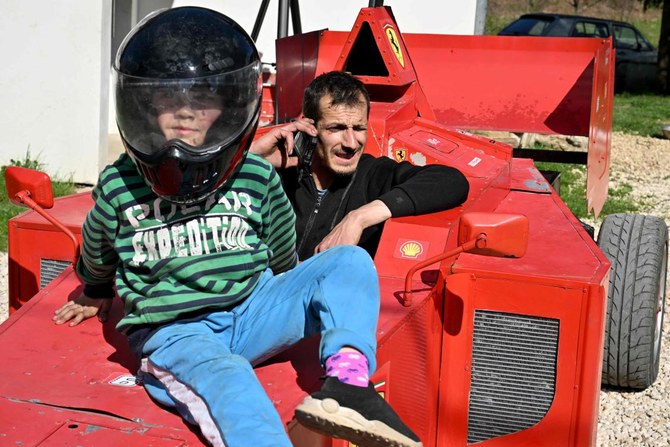AFP
WASHINGTON: Three wealthy businessmen and a former NASA astronaut splashed down Monday off the Florida coast after spending more than two weeks aboard the International Space Station, in a landmark mission for the commercial sector.
After a dizzying descent, a SpaceX Dragon capsule carrying the Axiom-1 gently floated down to the Atlantic Ocean near Jacksonville at 1:06 p.m. (1706 GMT) on four huge parachutes.
The spaceship was affectionately referred to as a “toasted marshmallow” because of the scorch marks on its heat shield from re-entering the atmosphere at 17,500 miles per hour (28,000 kilometers per hour).
The crew was quickly retrieved by a waiting ship, marking the official end of the first fully private mission to the orbiting outpost — and a turning point in US space agency NASA’s goal to commercialize the region of space called low Earth orbit (LEO).
“We proved that we can prepare the crew in a way that makes them effective and productive on orbit, and we’re ready to go do it again,” Derek Hassmann, operations director of Axiom Space, told reporters on a press call.
Axiom Space paid SpaceX for transport services and NASA for use of the ISS, while charging the three tycoons a reported $55 million each for the privilege.
“Welcome home, Axiom-1!” tweeted NASA chief Bill Nelson. “#Ax1 and all of the progress we’ve seen in the commercial space sector wouldn’t be possible without NASA’s collaboration with private industry.”
NASA is increasingly looking to private industry to handle operations in LEO, leaving itself free to focus on exploration missions to the Moon and eventually to Mars.
American real estate mogul Larry Connor, Canadian financier Mark Pathy, Israeli impact investor Eytan Stibbe and veteran Spanish-American astronaut Michael Lopez-Alegria had blasted off on April 8.
They were originally scheduled to spend only eight days on the space station but bad weather forced repeated delays.
In total, the crew spent 17 days in orbit, 15 of those on the ISS — but Hassmann said Axiom and its crew did not incur additional costs because of the delay.
Axiom had been keen to stress its mission shouldn’t be considered tourism, unlike the recent, attention-grabbing suborbital flights carried out by Blue Origin and Virgin Galactic.
On board the ISS, which orbits 250 miles (400 kilometers) above sea level, the quartet carried out research projects, including an MIT technology demonstration of smart tiles that form a robotic swarm and self-assemble into space architecture.
Another experiment involved using cancer stem cells to grow mini tumors, then leveraging the accelerated aging environment of microgravity to identify early changes in those tumors, to help improve screening methods.
Ahead of the voyage, some had questioned whether the Ax-1 mission might impact regular work on the ISS, currently crewed by three Americans, a German and three Russians.
“There were a lot of eyes on this mission just to see if it was practical,” said Hassmann, adding that, in the event, fears of disruption proved unfounded.
NASA has already given the green light to a second mission, Ax-2, with Hassmann telling reporters the crew would be revealed in the coming weeks, and the ship should fly around a year from now.
Monday’s sea landing of a crewed SpaceX Dragon capsule was the fifth to date.
SpaceX, owned by billionaire entrepreneur Elon Musk, is now regularly ferrying NASA astronauts to and from the space station.
Last year, Musk’s company launched another entirely private mission, which orbited Earth for three days without linking up with the ISS.
Axiom sees its voyages as the first steps of a grander goal: to build its own private space station. The first module is due to launch in 2024.
The plan is for the station to initially be attached to the ISS, before eventually flying autonomously when the latter retires and is deorbited sometime after 2030.




























